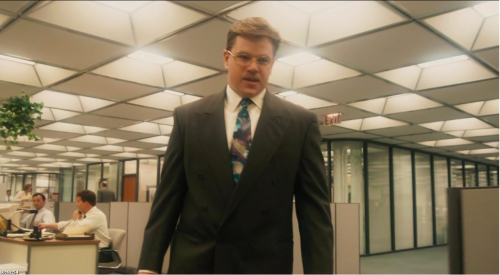The current critical consensus for the newest film from Steven Soderbergh is positive if not lukewarm. Yes, Haywire is a genre exercise. But Soderbergh has long excelled in distilling his thematic preoccupations via his intertextual approach to genre film making: He described The Limey (1999) as “Get Carter as made by Alain Resnais”; more recently, Contagion (2011) grapples with the global unconscious under the guise of an Irwin Allen-style disaster movie. Haywire, meanwhile, is intended to be Alfred Hitchcock’s version of a Pam Grier movie.
But because Soderbergh’s genre alchemy is already well known—and since I’ve already covered what it means to be Hitchcockian—I’m more interested in discussing Haywire‘s audacious mis en scene. For the film, Soderbergh used a 4K Red One camera, an expensive yet decidedly consumer-grade device said to produce images of the utmost quality. A number of recent films made with the Red One (including The Social Network, District 9 and Beginners) and though each effort, of course, varies in overall quality, the images themselves are rendered with stunning precision.
That’s not exactly the case with Haywire. Thought he’s worked almost exclusively with the Red One since his production of his Che Guevara biopic, Soderbergh has used the device in a way unlike any other directer. While others use the camera to ensure a flawless image, he seems to be doing the exact opposite. Indeed, key scenes in Haywire are often imbued with a harsh, fluorescent hue easily remedied in either post-production or by using simple diffusion fixtures that are built, quite literally into the camera. The end result is a disarming image with blurred, indistinct edges, brimming with the lifelessness of digital processing. This isn’t by accident.
Contagion boasted a similar aesthetic—as did The Informant! (2009) and The Girlfriend Experience (2009). What sounds like flawed filmmaking is, in reality, anything but. Rather than using the emergence of this new technology in its desired fashion, Soderbergh (under the guise of his pseudonym, Peter Andrews) is shooting his films in natural light, which, of course, has trouble translating to the digital format. When left untouched, actual light emits an unnatural glow most directors would remedy as to give their film a more “realistic” look. Soderbergh, however, often leaves the image unaltered, creating what I believe to be a new sort of a realism—in fact, a “digital realism,” one that strives to depict the world as captured by the Red One and its ilk rather than striving to manipulate the image to better replicate an actual “realistic” appearance.
Take, for example, Haywire‘s opening sequence and the light that seeps in through the diner’s windows:
This scene—aside from being a kinetic, superbly orchestrated fight scene—literally sheds light on what the world looks like when viewed through a digital lens. That’s what snow looks like when captured by the Red One’s CMOS image sensor. A bit different than when light burns onto celluloid, no?
From Contagion, here’s another scene with snow. If it seems less blinding, that’s because the overcast skies are prohibiting light from the sun from reflecting off the snow, further illustrating Soderbergh’s reluctance to manipulating the image:
Soderbergh, long noted for atemporal approach to narrative in addition to his aforementioned genre alchemy, is rarely distinguished for his visual strategies. Yet as he continues to tinker with the Red, he takes extra precautions to ensure that the audience is aware of the digital technology he’s employing, like an running commentary on burgeoning filmic technologies.
Another example, this time from The Informant!:
Notice the bright, florescent natural light and the way it juxtaposes the warmer, unnatural light coming from the fixtures in the elevator. The Red favors artificiality and Soderbergh is more than inclined to do its bidding, if simply to call attention to how it functions as the sort of sentient being it’s reputed to be.
This is perhaps what he meant when he said, “This is the camera I’ve been waiting for my whole career: jaw-dropping imagery recorded on board a camera light enough to hold with one hand…Red is going to change everything.”



